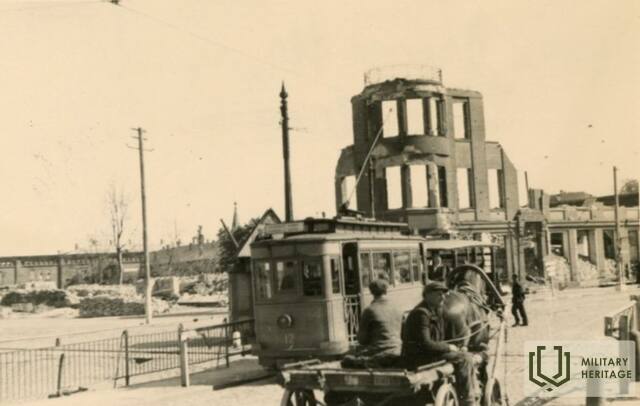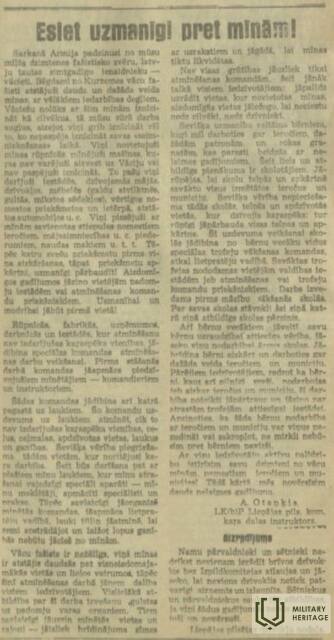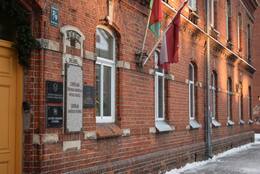Liepoja – įvairių istorinių įvykių kryžkelėje
Liepojos gyventojai buvo vieni pirmųjų Latvijoje, patyrusių Antrojo pasaulinio karo protrūkį, ir vieni paskutiniųjų, kuriems karas baigėsi tiek tiesiogine, tiek simboliška prasme. Antrasis pasaulinis karas ir sovietų okupacija Liepojoje baigėsi tik 1994 m., kai iš miesto paliko paskutiniai SSRS įpėdinės Rusijos kariai.
Po to, kai 1939 m. Molotovo-Ribentropo paktas nustatė įtakos sferas tarp SSRS ir nacistinės Vokietijos, SSRS privertė Latviją pasirašyti savitarpio pagalbos sutartį ir leisti savo karinėms bazėms dislokuotis Latvijos teritorijoje. 1939 m. spalio pabaigoje į Liepoją įžengė pirmieji Raudonosios armijos daliniai, kurie buvo dislokuoti šiaurinėje miesto dalyje – Karo uoste. Tuo pačiu metu miestą paliko viena didžiausių miesto mažumų – vokiečiai, kuriuos Hitleris repatrijavo į Vokietiją ir dalį okupuotos Lenkijos.
1941-ieji tapo tragiškais metais Liepojos istorijoje. 1941 m. birželį sovietų valdžia deportavo kelis šimtus Liepojos gyventojų. Liepojos Čekos pastate Respublikos gatvėje 19, pramintame „Mėlynuoju stebuklu“, daugelis Liepojos gyventojų, kurie nepritarė sovietų okupacijai, buvo sulaikyti ir kankinami. Karas Liepoją paveikė jau 1941 m. birželio 22 d. Vėliau sovietinė propaganda bandė Liepojos gynybos mūšius paversti vienu iš sovietinių didvyriškų mitų. Vokiečių okupacijos metas atnešė naują tragediją – dauguma Liepojos žydų žuvo per vokiečių inicijuotą Holokaustą Šķēdės kopose. Miestas karo metu labai nukentėjo – karas mieste baigėsi tik 1945 m. gegužės 8 d. Po to sekė antroji sovietų okupacija, gyventojų deportacija, sovietų karinio jūrų laivyno bazės įkūrimas ir miesto industrializacija, o tai gerokai pakeitė miesto gyventojų sudėtį.
Tik devintojo dešimtmečio pabaigoje, žlugus SSRS, atsirado galimybė atkurti Latvijos nepriklausomybę. Svarbų vaidmenį šiame procese atliko Latvijos liaudies frontas, kurio buvusiame Liepojos miesto skyriaus būstinėje 2001 m. sausio 21 d. atidaryta paroda. Liepojos Liaudies fronto skyrius buvo antras pagal dydį, iškart po Rygos skyriaus – jis vienijo 13 000 narių. Būtent iš šios vietos 1991 m. sausio barikadų metu buvo organizuojami savanorių autobusai, važiuojantys saugoti objektų Rygoje.
Susijusi laiko juosta
Susijusios temos
Susijusios vietos
Liepojos muziejaus paroda „Liepoja okupacinių režimų laikais“
Liepojos muziejaus paroda „Liepāja okupaciniais režimais“ yra įsikūrusi Liepojoje, Klāva Ukstiņa g. 7/9.
Paroda apima laikotarpį nuo 1939 iki 1991 m., dvigubos sovietų ir vokiečių okupacijos metu. Liepojos gyventojai buvo vieni pirmųjų Latvijoje, patyrusių Antrojo pasaulinio karo pradžią, ir vieni paskutiniųjų, kuriems karas baigėsi tiek tiesiogine, tiek simboline prasme.
Tik žlugus SSRS devintojo dešimtmečio pabaigoje atsirado galimybė atkurti Latvijos nepriklausomybę. Svarbų vaidmenį šiame procese atliko Latvijos liaudies frontas, kurio paroda, atidaryta 2001 m. sausio 21 d., įrengta buvusioje Liepojos miesto skyriaus būstinėje. Liepojos Liaudies fronto skyrius buvo antras pagal dydį po Rygos skyriaus, turėdamas 13 000 narių. Būtent iš čia 1991 m. sausio mėn. barikadų metu buvo organizuojami savanorių autobusai, vežantys ginti Rygos vietas. 1991 m. rugpjūčio 23 d., Molotovo-Ribentropo pakto dieną, buvo išardytas Lenino paminklas, sovietų valdžios simbolis mieste. Vėlesniais metais iš jo Vokietijoje buvo pagaminta 500 bronzinių varpų – praeities epochos suvenyrai. Vienas iš šių varpų taip pat eksponuojamas.
Antrasis pasaulinis karas ir sovietų okupacija Liepojoje baigėsi tik 1994 m., kai iš miesto paliko paskutiniai SSRS įpėdinės Rusijos kariai.
Muziejus reguliariai rengia temines savo kolekcijos ir meno kūrinių parodas, taip pat paskaitas ir susitikimus su istorikais ir naujausios Latvijos istorijos liudininkais. Šiuo metu muziejaus pastatas renovuojamas, o ekspozicija atnaujinama.








